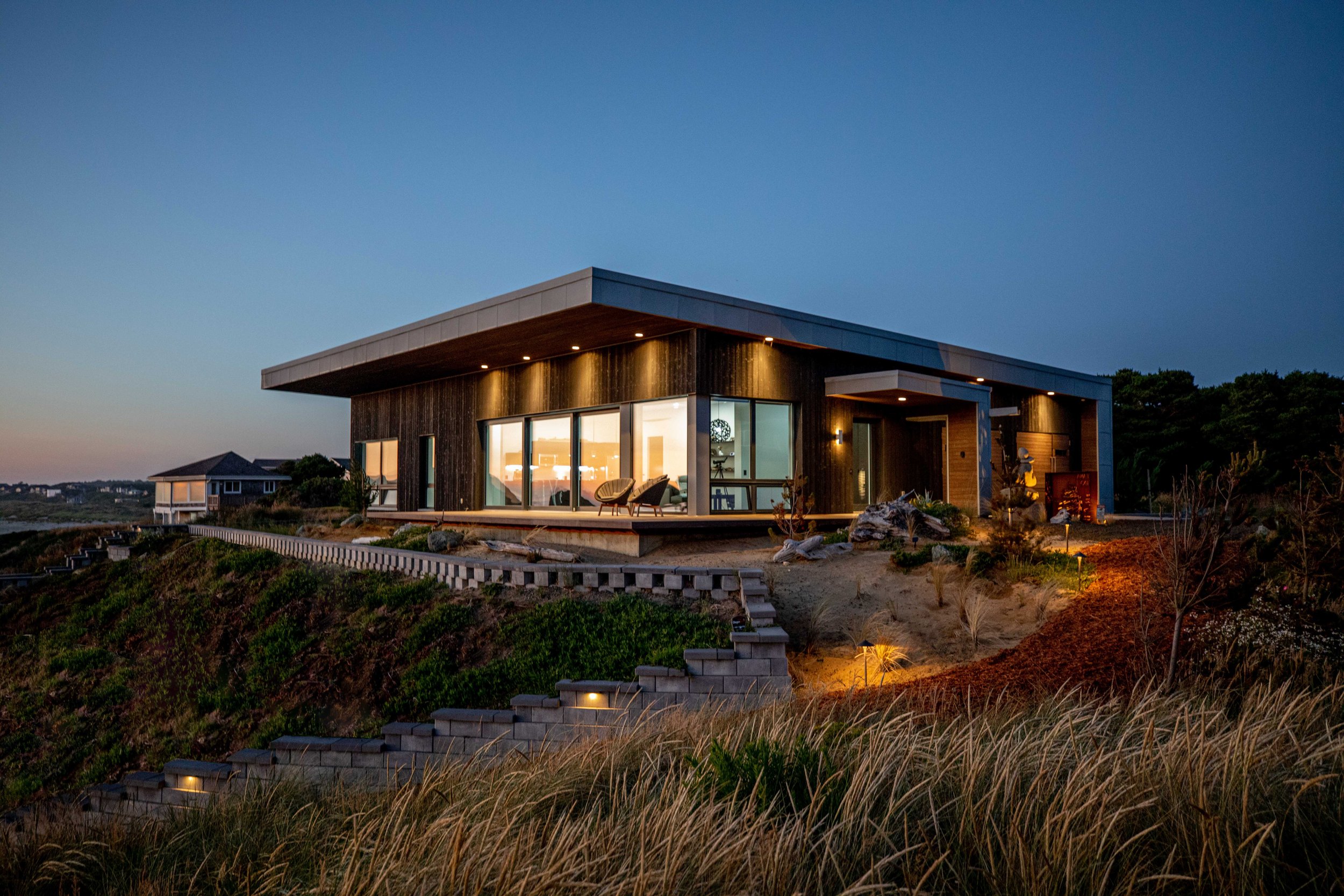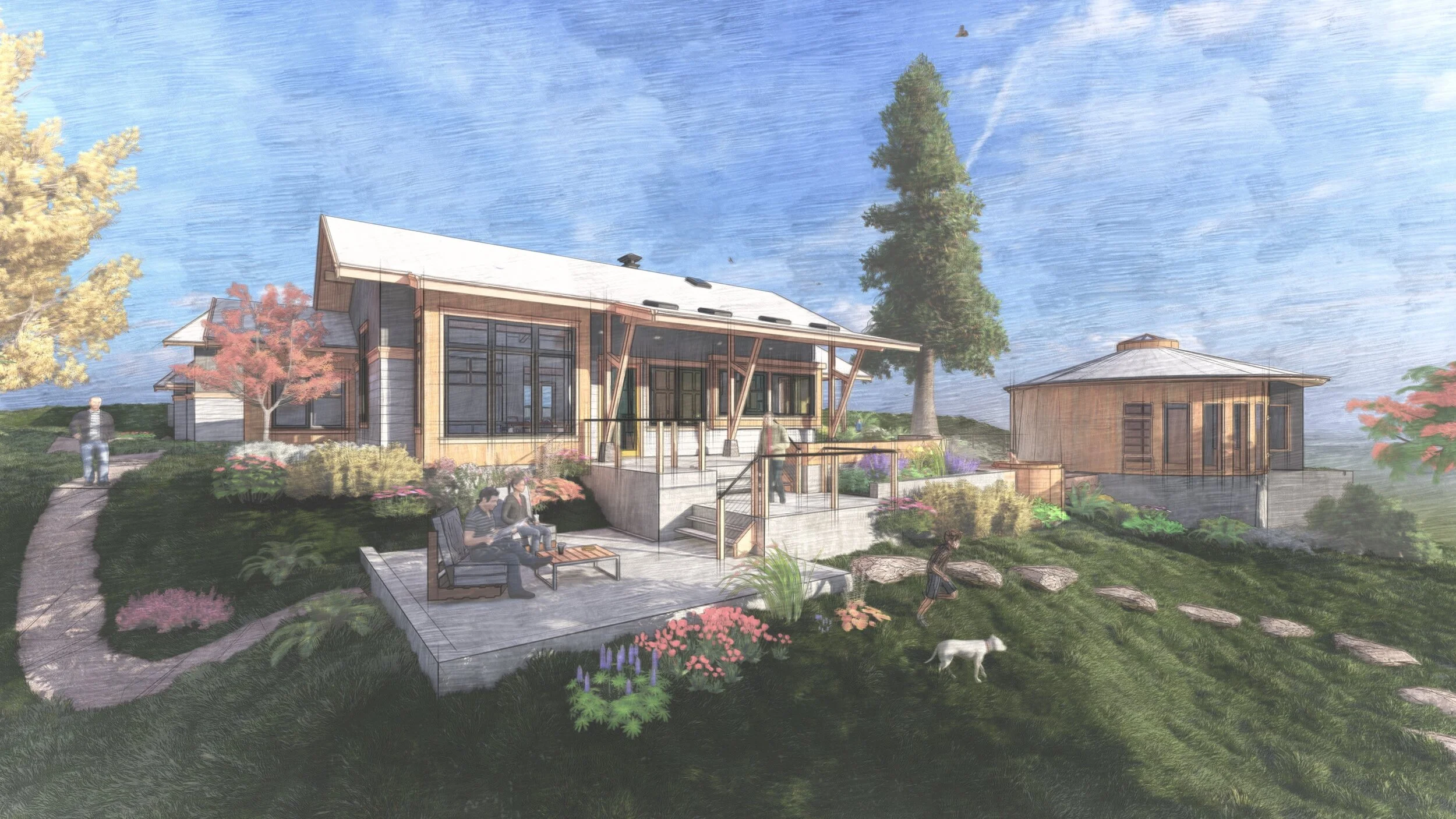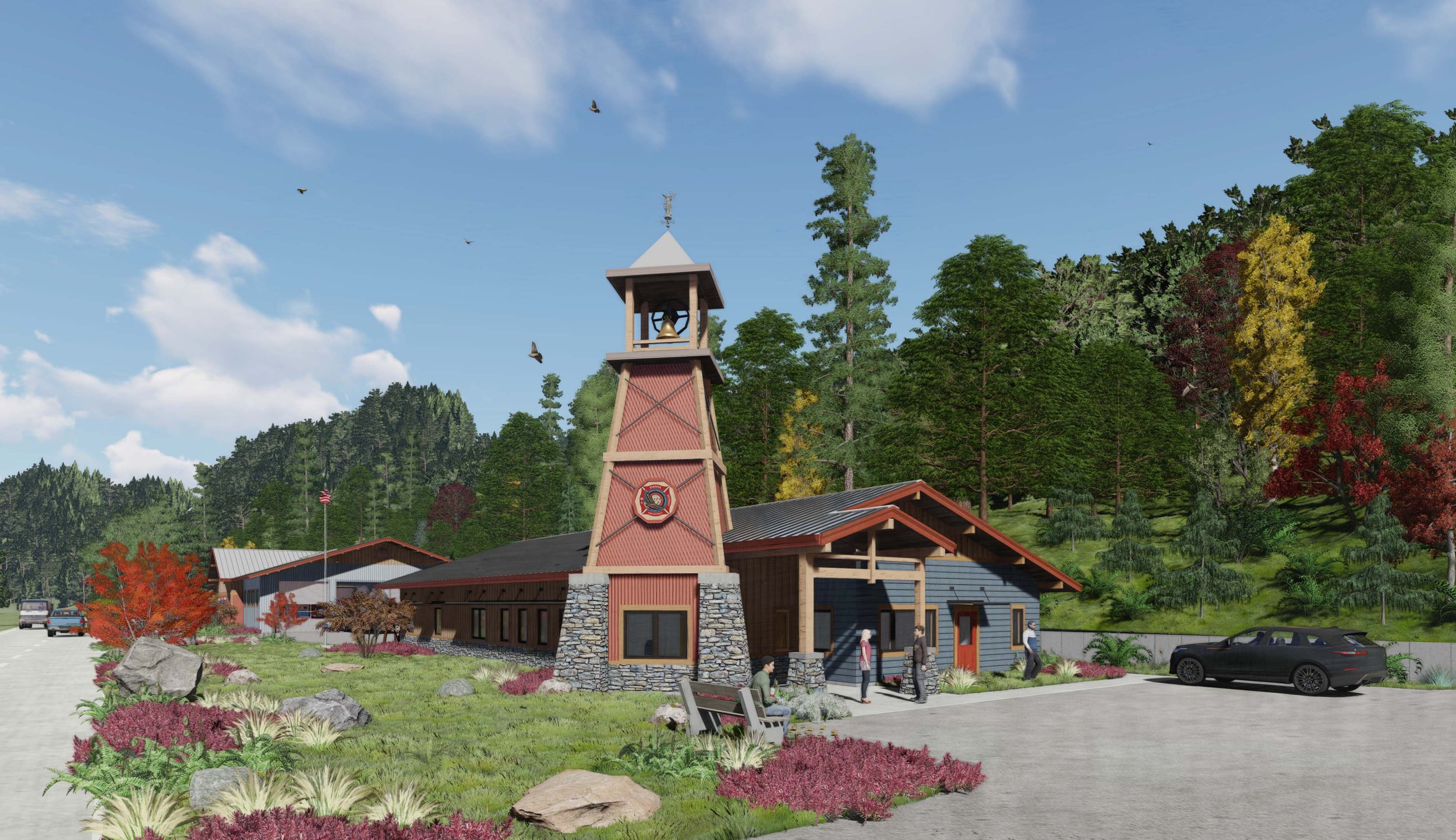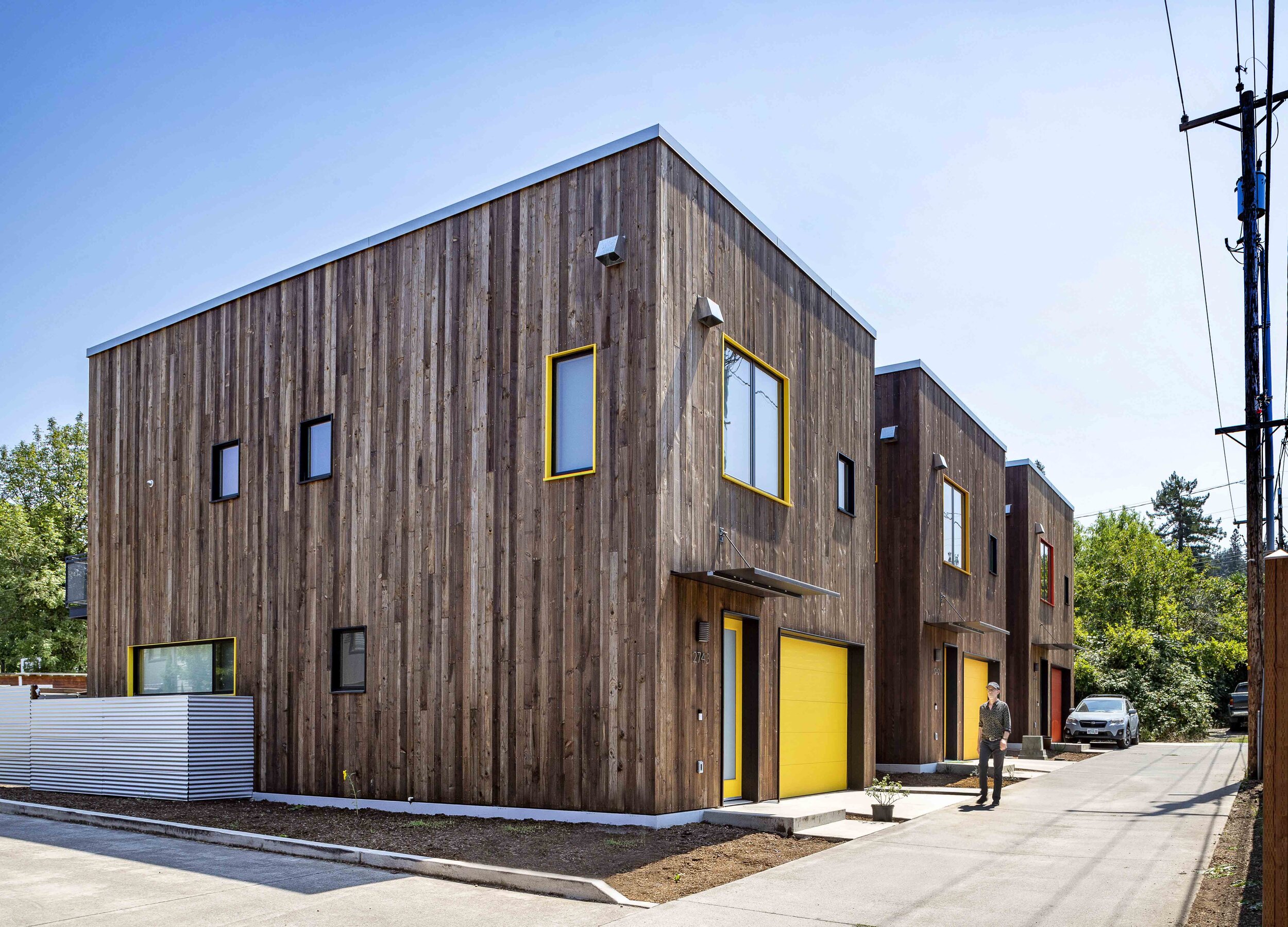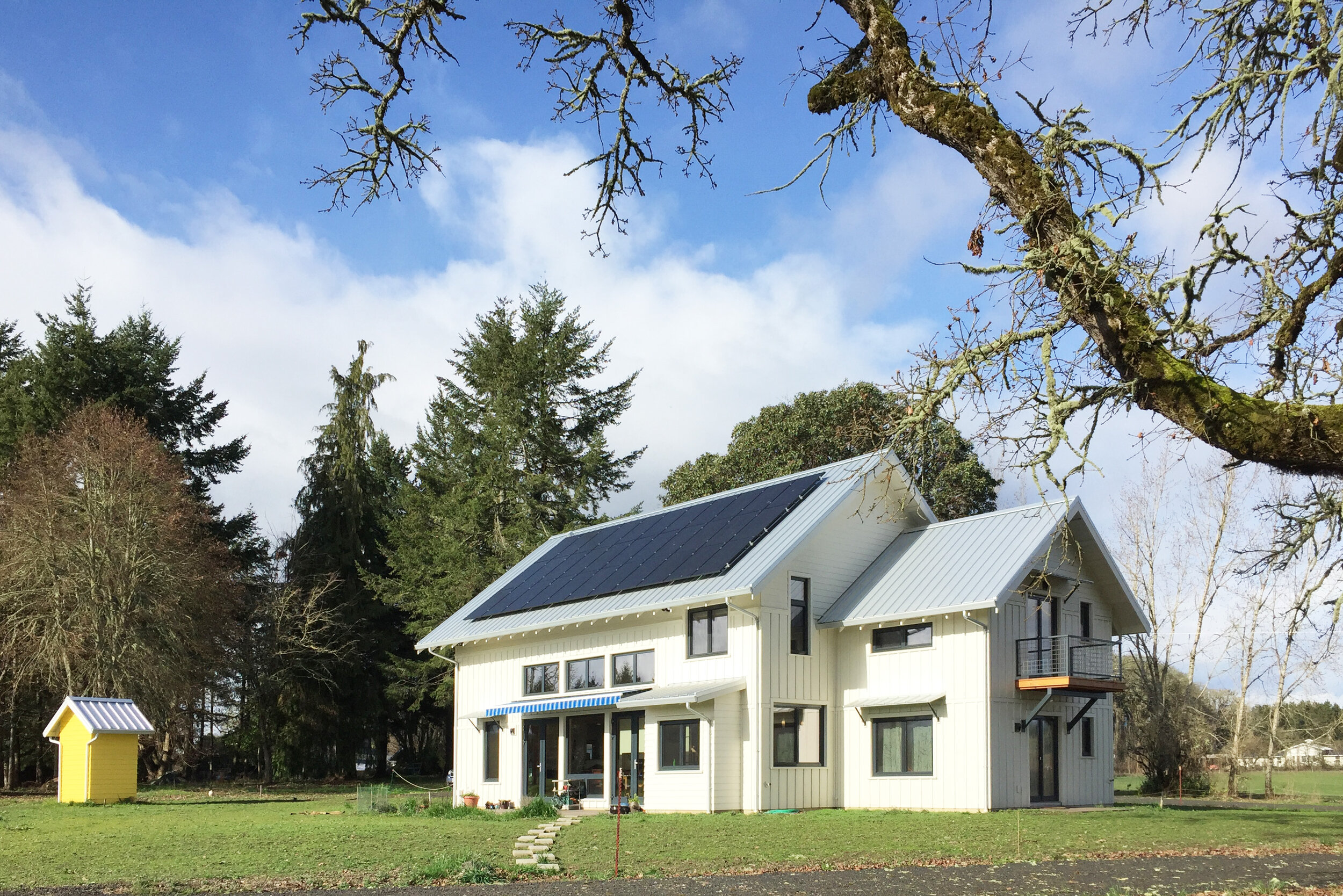Phoenix Fire Station
Rebuilding after the beachie creek blaze
Location | Idanha, Oregon
Project Type | Fire Station
Size | 4000 SF firehouse, 5600 SF garage
Completion | Unbuilt
Architecture | Jan Fillinger, design principal; Cameron Ewing, project manager Interior | Studio.e Architecture Lighting | Studio.e Architecture
The new Phoenix Station will serve as a beacon of inspiration for rebuilding, growth, and service in the wake of the devastating wildfires of 2020.
The disaster aftermath inspired many residents of Idanha and Detroit to volunteer their services in the communities
they call home. When Phoenix Station is complete, it will build upon this upswing of energy and assist in shaping and directing it to its full potential. This modern facility will allow Idanha / Detroit Fire District to bring their mission into the current era with a facility that will last until the next.
In the decades since the Idanha / Detroit Fire District’s inception in 1954, emergency response services have evolved in both role and scale. Facilities that were once adequate for fire services have become obsolete as technology, regulations, and business structures have advanced. These changes have presented service provision challenges
that the District’s older facilities can no longer accommodate. In addition, fire vehicle apparatus and essential emergency response equipment is now much larger and more technologically advanced, requiring more space and additional infrastructure, beyond what the original 1954 facilities provide. The new station will allow the District to fully meet the community’s needs for decades to come.
Phoenix Station was designed with goals of resiliency, efficiency, and hospitality. The building’s aesthetics are rooted in the rural timber communities of Idanha and Detroit.
The bell tower at the entry evokes the style and construction methods of historic fire watchtowers, using this symbolism to respect the past, while moving forward with continued service to the communities in the future.
Phoenix Station is classified as an essential structure and will be structurally reinforced for earthquake resistance far beyond what is required for most buildings of similar size. A robust backup generator and medical supplies allow the station to function as a shelter during a disaster scenario. The roof of the building will shed snow in directions
that will not impede vehicle or pedestrian circulation and will be wired to accommodate future photovoltaic solar panels.
Materials for the building were chosen for their low maintenance, durability, and weather resistance. The station features four offices, a conference room that will double as a command center, four resident dorms, a lounge with kitchen, and a workout room. The floorplan is ADA accessible throughout. The apparatus bay provides nine bays for fire vehicles, a decontamination room, and storage for equipment that is essential for firefighting services.













